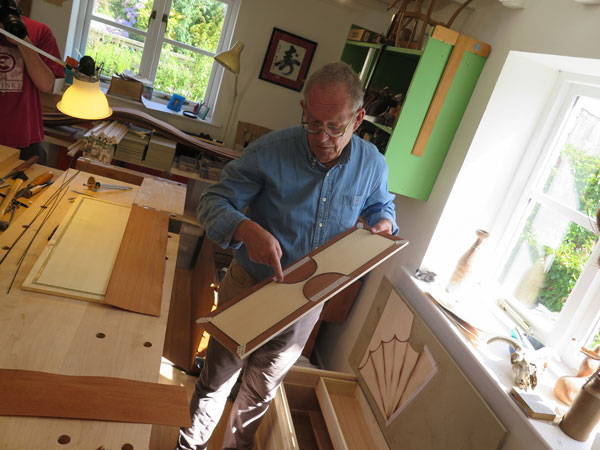
This is an excerpt from “The Woodworker: The Charles H. Hayward Years: Volume IV” published by Lost Art Press.
Although there are many occasions when sliding doors can be used with advantage it should be pointed out that they should not be fitted where hinged doors can be used satisfactorily; the chief reasons against their use are that they give only limited access to the interior, and entail increased cost, due to the extra depth required over-all.
Consider Fig. 1 for example. Sliding doors are shown, but imagine that hinged ones had been used. With these wide open, access to the interior would be carcase-wide. This is impossible with sliding doors; when the right-hand door is pushed in behind the left, access to the interior is provided for approximately half the carcase width only. To get at the left-hand side of the carcase it is necessary to push both doors right over to the other end. Take note as well of the cost of the extra inch or so required on the depth of the carcase all round, and also the additional work involved in fitting the running tracks.
What then determines the use of such doors? Call to mind those tiers of sliding door showcases so often fitted behind a shop counter; probably assistants have been passing busily to and fro attending to customers. Imagine the chaos that would ensue if such doors were flung open on hinges, thus effectively blocking all the available passage way behind the counter. Again, in a minor way, it is essential to fit sliding doors to cabinets in some modern kitchenettes, where the swing of a hinged door might foul some other member of the kitchen equipment. To sum up, sliding-door cabinets are at a disadvantage where immediate and complete access is required, but are ideal when utility and passage room have to be considered.
The cabinet in Fig. 1 is given to illustrate the methods of fitting sliding doors. It would, however, make up into a handy article for the kitchen, and could be carried out in birch and afterwards painted or enamelled. Alternatively, as a shop fitting, fumed oak would look well. All references to patent metal sliding tracks have been omitted; these are usually somewhat expensive and cannot always be obtained through retail dealers. With a little care, no difficulty should be experienced if made entirely in wood. The over-all sizes can be amended, of course, to suit individual requirements.
CONSTRUCTION
The sizes for setting-out are given in Fig. 2 and the construction in Fig. 3, whilst Fig. 4 gives four methods of arranging the sliding doors, any one of which will prove satisfactory in operation.
The methods are lettered A, B, C, and D.

Method A is the simplest. Note that only one groove is required in the top and bottom for the parting beads which separate the two doors. The back door is retained in place by means of fillets, 1/2 in. x 1/4 in., glued and pinned to the top and bottom and positioned parallel with the parting beads. The front door could be held in place by means of facing strips, cup-screwed on to the edges of the top and bottom. Note that these facing strips are flush with the ends when fitted and should be neatly shouldered between them.
Method B probably gives the best finish and is shown in Fig. 2. This gives the same thickness of ends, top, and bottom all round; in addition, no screws are required for fixing the front facing strips.
The top and bottom must be rebated down 1/4 in. for the doors and then grooved again for the parting beads. Finally the front edges of the top and bottom are grooved for the tongues of the facing strips. These again are neatly stepped between the ends.
Method C follows closely to that of B, but one important variation is that the bottom edge of each door is shod with a piece of strip brass, approximately 1/8 in. thick. These strips run full length and should be screwed up to the undersides; make sure that the screwheads are well countersunk. The running tracks are also provided with full-length strips of brass sunk flush and screwed into the bottom. Thus we have brass running on brass, which has proved very satisfactory in use. Needless to say, all sharp burrs on the metal should be removed with a file. Alternatively, a hard fibre could be substituted for brass.
Method D hardly needs comment. The top and bottom edges of the doors should be grooved to receive half-round beads, the latter being pinned to the carcase top and bottom. At the front in order to give a finish, quarter-round beads are pinned right around the carcase. The plan details given in Fig. 4 will also be found easy to follow. The door stiles which adjoin the ends could be beaded or rebated in to the latter. Alternatively, a tongued facing strip might be carried right up the ends, thus following on the idea given with method B. Or, again, a quarter-round bead could be pinned on. Note the fillet (L) which is screwed to the back door stile. This effectively closes the gap between the two doors and should be shaped around the parting beads at the top and bottom; it will not be required, however, if method D is adopted.
— MB













